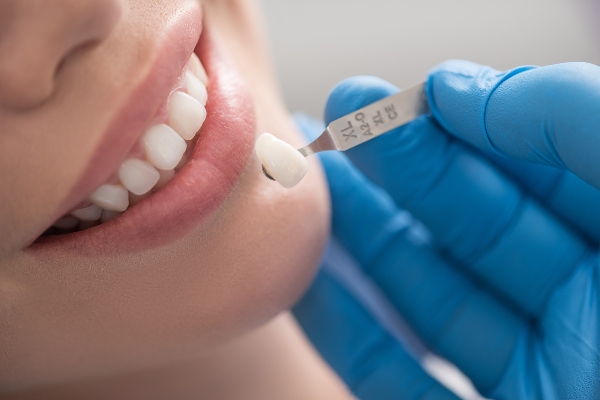 Dental crowns and dental bridges are effective restorations dentists use to address missing or damaged teeth. While they share some similarities, they differ when it comes to the placement process, their purpose, and the number of teeth involved. Learn which is best for you to restore your smile.
Dental crowns and dental bridges are effective restorations dentists use to address missing or damaged teeth. While they share some similarities, they differ when it comes to the placement process, their purpose, and the number of teeth involved. Learn which is best for you to restore your smile.
Dental crowns
The dentist will use dental crowns to restore, protect, and strengthen weak or damaged teeth. They are tooth-shaped caps that engulf a weak tooth to restore its shape, size, strength, and appearance. They are primarily for a single tooth that cannot be effectively restored with a filling or other dental restoration.
When receiving a dental crown, the dentist examines the tooth by taking X-rays to fully asses its condition. In some cases, a root canal is necessary to remove infection and decay from the pulp chamber and replace it with a material called gutta-percha. If no root canal is required, they remove the decay or fragile damage, effectively reshaping the tooth. After the reshaping process, the dentist will take impressions of the tooth before sending them off to an off-site lab to fabricate a custom dental crown.
While waiting for the permanent custom dental crown, the dentist will place a temporary crown over the vulnerable natural tooth for protection. The patient will return to the office approximately two weeks later to have the temporary crown removed, and the custom crown affixed.
The dentist will instruct patients to wait to floss around their new dental crowns for the first 24 hours so that they may properly bond to the tooth. However, afterward, patients can resume their normal oral hygiene routine, including brushing morning and night and flossing at least once before using an alcohol-free mouth rinse.
Dental bridges
Dental bridges can replace missing teeth as opposed to damaged teeth. They consist of two dental crowns on adjacent healthy teeth, formally known as abutment teeth, with artificial teeth, formally called pontics, in between. The dentist will use dental bridges to replace one or multiple missing teeth, restore the ability to chew and speak properly and prevent the shifting of surrounding teeth.
There are various forms of dental bridges, including traditional, cantilever, Maryland, and implant-supported. After determining the type of bridge a patient will receive, the dentist will begin the process by evaluating the health of the patient's abutment teeth. They will prepare them by shaving a portion of the enamel to create a space for crowns. An impression of the prepared teeth and gap will follow for the dentist to send to an off-site lab for custom-bridge fabrication.
While waiting for the permanent bridge, the dentist will place the temporary bridge to protect the newly shaved abutment teeth and maintain proper function. Once the permanent bridge arrives at the dental office, typically within two weeks, patients will return to have the temporary bridge removed and the custom one affixed.
There will be an adjustment period for caring for the dental bridge. The dentist will request they not use floss or chew tough or sticky foods for the first 24 hours after receiving the permanent bridge. After this period, there will be no dietary restrictions, but the patient will need to switch to a floss threader to prevent food debris from getting stuck inside the bridge and causing cavities or infections.
Restoring your smile does not have to be hard
Dental crowns and bridges are both excellent choices for restoring your smile, and both can be placed in two appointments. Contact us today to schedule an evaluation and determine which option suits your condition.
Request an appointment or call Oro Valley Family Dentistry at 520-833-5261 for an appointment in our Tucson office.
Related Posts
When it comes to enhancing the smile or addressing dental issues, dental crowns and veneers are popular options that offer great results. Both serve different purposes and have unique advantages. It helps to understand the distinctions between the two so you can decide which option is best suited for your specific needs.Dental crowns and veneers…
Dental crowns can restore your smile. These restorations can bring back your normal dental function at the same time. Understanding the reasons to get caps to improve your looks can motivate you to set an appointment. Here are the cosmetic reasons for getting dental crowns.Severe decay deteriorates the enamel. This condition weakens the dental structure.…
Dental crowns are a reliable and effective tool for restoring damaged teeth. While most people think of dental crowns in relation to root canals, crowns can also restore beauty and function to cracked teeth. If you have fractured a tooth, a dental crown may be the solution you have been looking for.A dental crown sits…


